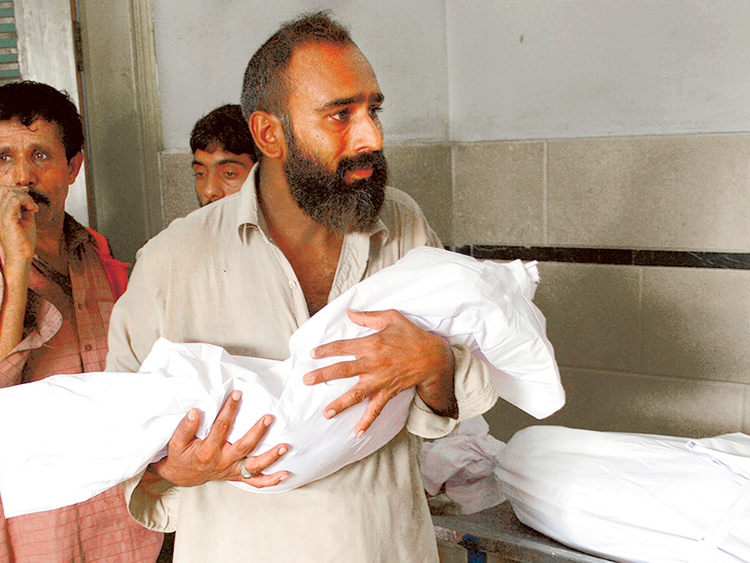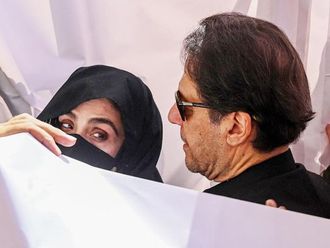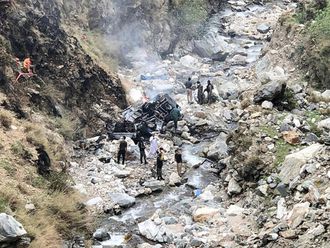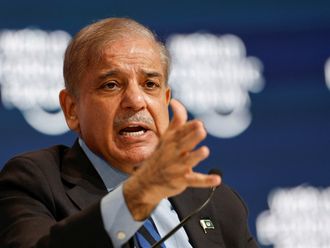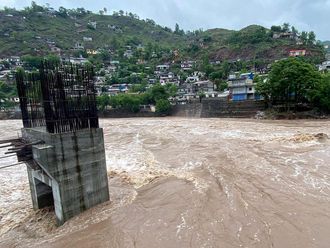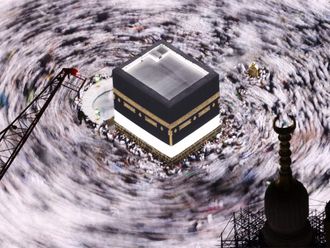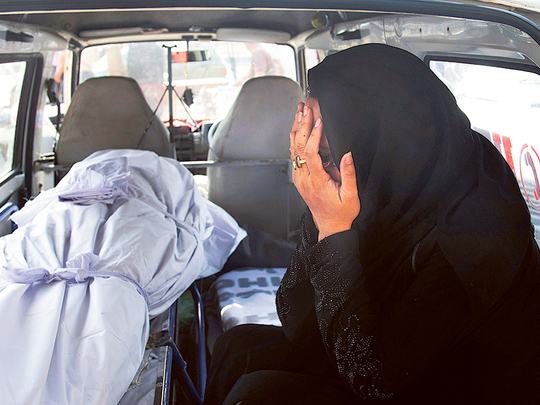
Islamabad: As the death toll from a devastating heatwave across southern Pakistan on Monday reached 200, with many more recovering from heat-related illnesses, the army was drawn in to assist with rescue efforts in a sign of increasingly desperate conditions.
Though triggered by an act of nature, the heatwave has presented the government of Prime Minister Nawaz Sharif with a new challenge — accompanied by an obvious political cost.
Graphic images of a mortuary in Karachi overfilled with bodies of heatwave victims prompted volunteers to quickly bury those unclaimed by friends or relatives, to make way for the remains of newly arriving casualties.
The desperation of the volunteers highlighted the gravity of the crisis, as Sharif ordered the national disaster management authority or NDMA, the top crisis management body, to step in and oversee relief efforts.
Meanwhile, army troops deployed under the banner of a paramilitary force known as the Rangers quickly established makeshift heatstroke relief centres across Karachi, the large metropolitan city with a population of about 20 million.
Equipped with emergency supplies to treat incoming patients struck by heatstroke, the centres have become the focal point for treating an increasingly growing number of victims.
Meanwhile, aggravating conditions resulting from the fortnight long heatwave have not been helped by continuing electricity shortages that have become an almost permanent feature of daily life across Pakistan.
To the surprise of many Pakistanis, the advent of Ramadan on Friday was preceded by official promises of a considerable reduction in electricity cuts — at least during the pre-sunrise keeping of the fast or ‘Suhour’ and around the post-sunset breaking of the fast known as ‘Iftar’.
However, the holy month has brought anything but relief for electricity-starved consumers.
Many people who had hoped officials would keep their promises of more electricity coming through their power circuits were quickly disappointed as the duration of power cuts across the country has jumped considerably since Ramadan began.
For Sharif, the failure of the authorities to rein in the power cuts has added to the heatwave related woes notably in poverty stricken neighbourhoods, where average households can neither afford backup generators nor battery powered UPS or uninterrupted power supply devices.
As summer temperatures have soared in Pakistan, the ever increasing power cuts have been fuelled by growing demand from high-end users ranging from those dependent on cranked up air-conditioners to cooler refrigerators.
In a visible sign of political costs for Pakistan’s rulers, a key lawmaker in the provincial assembly of the Sindh province, of which Karachi is the capital, representing the MQM or Muttahida Qaumi Movement political party, on Monday lamented the failure of Sharif’s federal government along with the provincial government of Sindh in mitigating the effects of the crisis.
Khawaja Izharul Hasan, the MQM legislator, practically scolded K-Electric, Karachi’s main electricity supply company, for its failure to increase electricity supply to keep up with the demand.
“Crises and difficulties tell you about [the performance of] governments. Crises [also] tell about the functioning of various departments” roared Hasan on the floor of the provincial legislature.
His anger however was still no match for the participants of a number of violent public protests across Pakistan in recent days, where frustrated electricity consumers bitten by long duration power cuts eventually lost their cool.
The heatwave across Pakistan has progressively arrived after striking neighbouring India where a large number of casualties were also reported.
Yet, critics like Hasan argue that Pakistani authorities just did not anticipate a similar crisis in spite of widespread reports of the heatwave just across the border.
Though some meteorological experts in Pakistan expect rainfall to arrive in the coming days, the unpredictability surrounding weather patterns makes this a far from perfect prediction.
And even if a coming spell of rainfall brings momentary relief from temperatures that have soared as high as a record 48 degrees Celsius in parts of Pakistan recently, it’s hard to know if this year’s heatwave-related turmoil will end any time soon.
In the meantime, ruling politicians like Sharif may well find themselves helpless as they brace for the political cost following the human toll.
Though the prime minister has promised to oversee new projects for increasing electricity supply for his energy starved nation, translating commitment to reality may be easier said than done.
Across Pakistan, work has already begun on some new electricity generation projects while the government is eager to kick in reforms surrounding inefficient electricity supply lines.
Yet, a visible lift to electricity supply may be at least three or four years away. Though Pakistani consumers who patiently brave the storm may then find some relief, it’s just not good enough for Sharif’s politics. With Pakistan’s next parliamentary elections due in 2018, its certain that consumers bitten by electricity cuts and this year’s devastating heatwave may find reason to vote against Pakistan’s current rulers.


